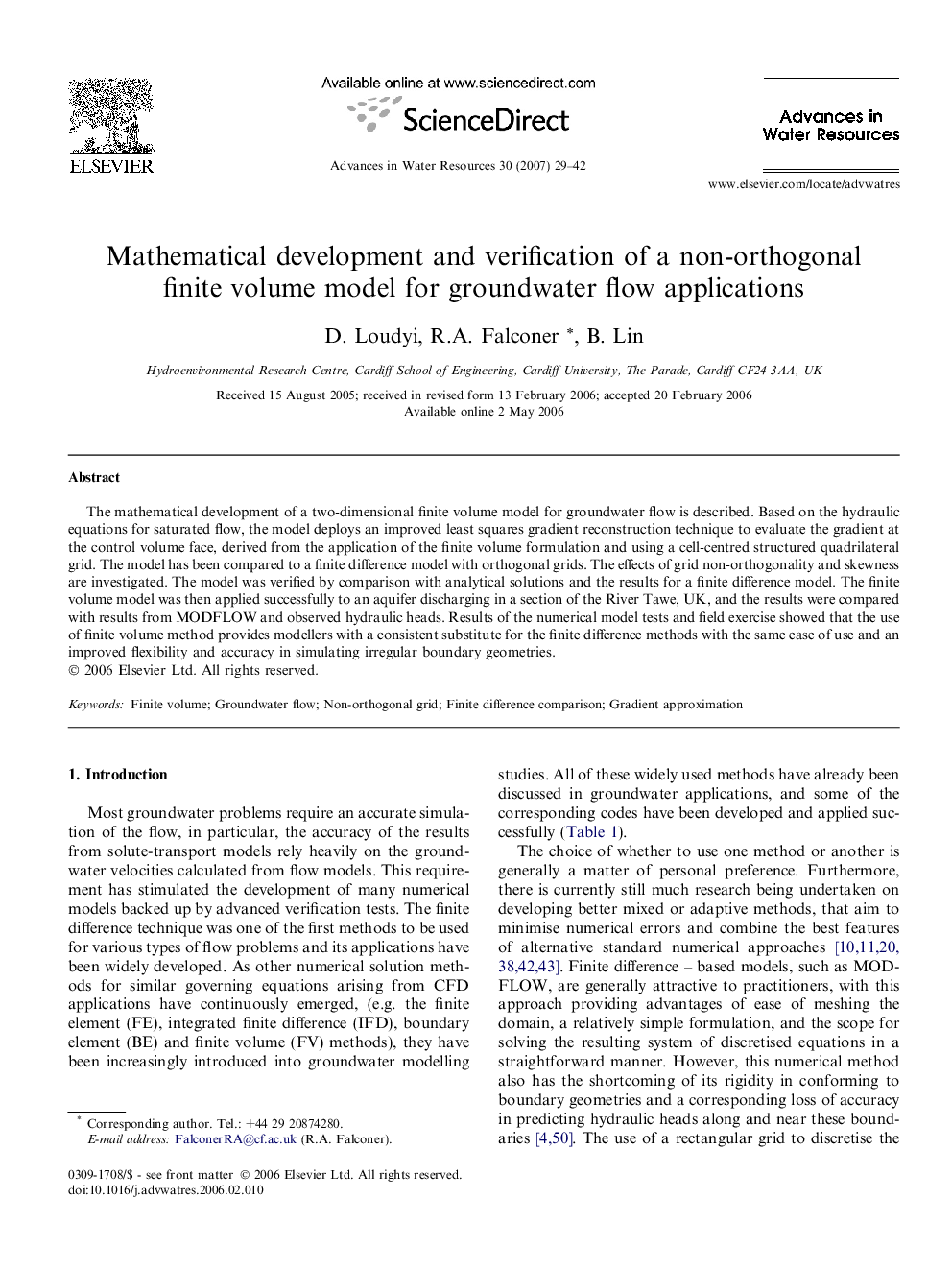| Article ID | Journal | Published Year | Pages | File Type |
|---|---|---|---|---|
| 4526990 | Advances in Water Resources | 2007 | 14 Pages |
Abstract
The mathematical development of a two-dimensional finite volume model for groundwater flow is described. Based on the hydraulic equations for saturated flow, the model deploys an improved least squares gradient reconstruction technique to evaluate the gradient at the control volume face, derived from the application of the finite volume formulation and using a cell-centred structured quadrilateral grid. The model has been compared to a finite difference model with orthogonal grids. The effects of grid non-orthogonality and skewness are investigated. The model was verified by comparison with analytical solutions and the results for a finite difference model. The finite volume model was then applied successfully to an aquifer discharging in a section of the River Tawe, UK, and the results were compared with results from MODFLOW and observed hydraulic heads. Results of the numerical model tests and field exercise showed that the use of finite volume method provides modellers with a consistent substitute for the finite difference methods with the same ease of use and an improved flexibility and accuracy in simulating irregular boundary geometries.
Related Topics
Physical Sciences and Engineering
Earth and Planetary Sciences
Earth-Surface Processes
Authors
D. Loudyi, R.A. Falconer, B. Lin,
